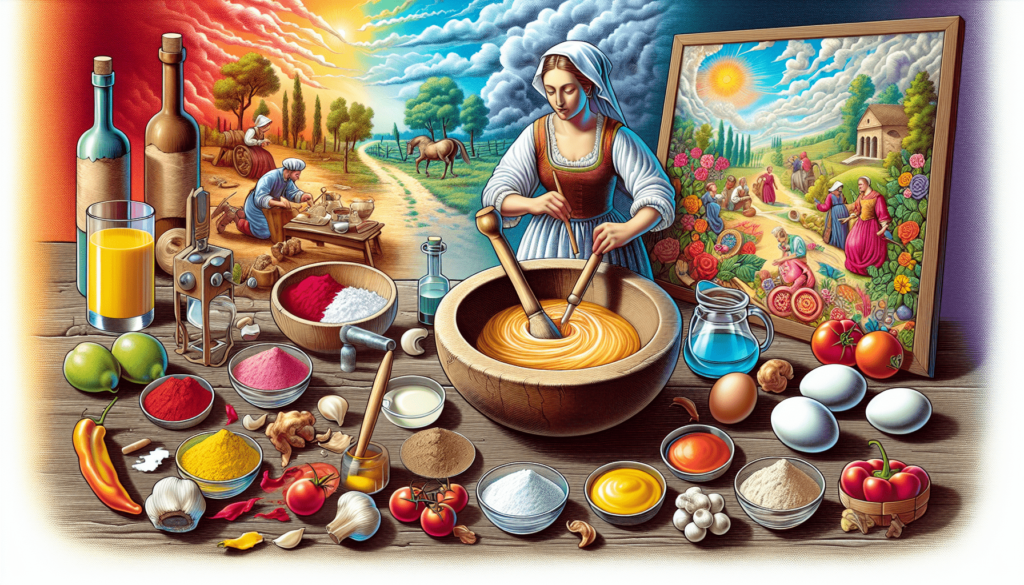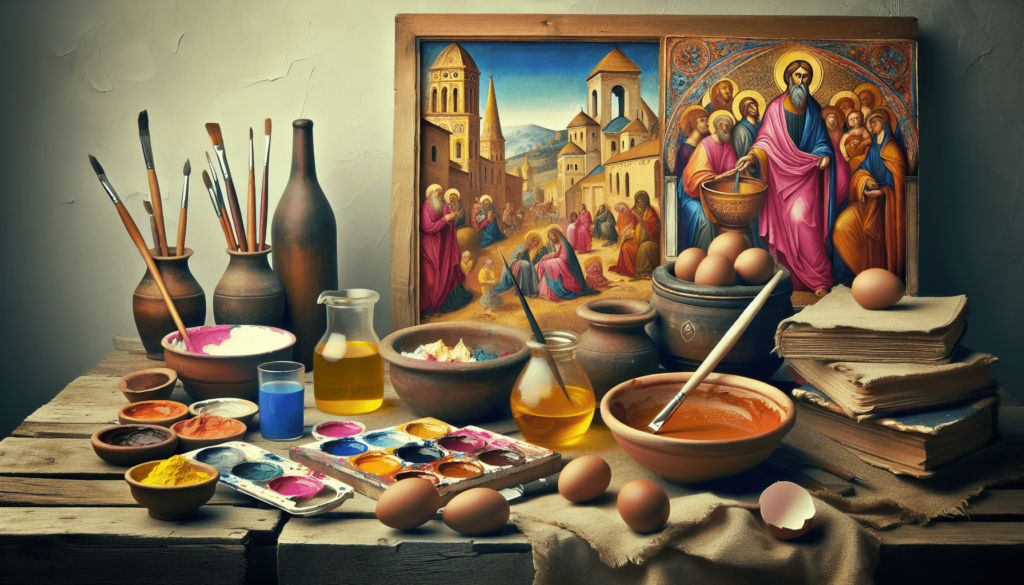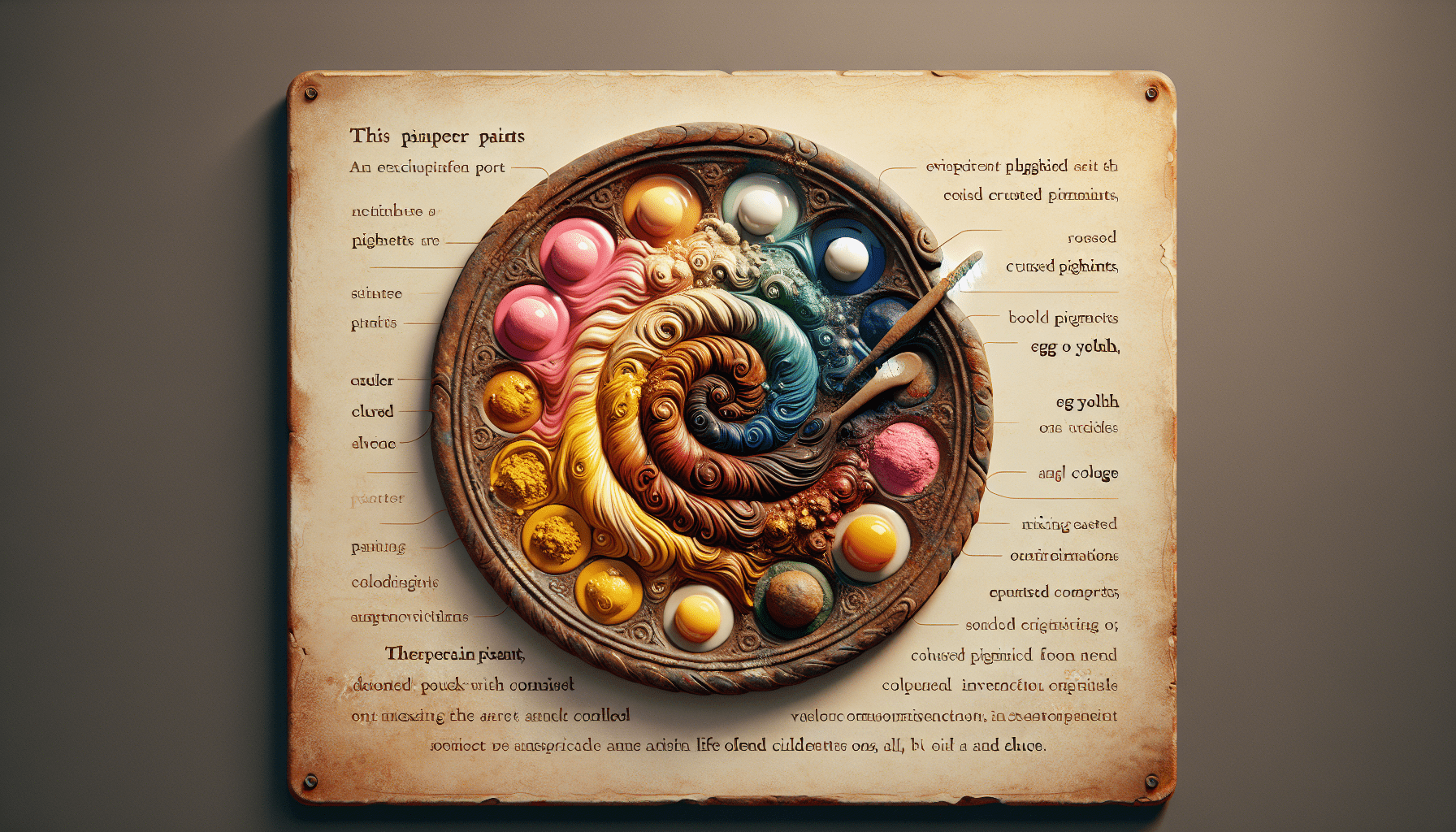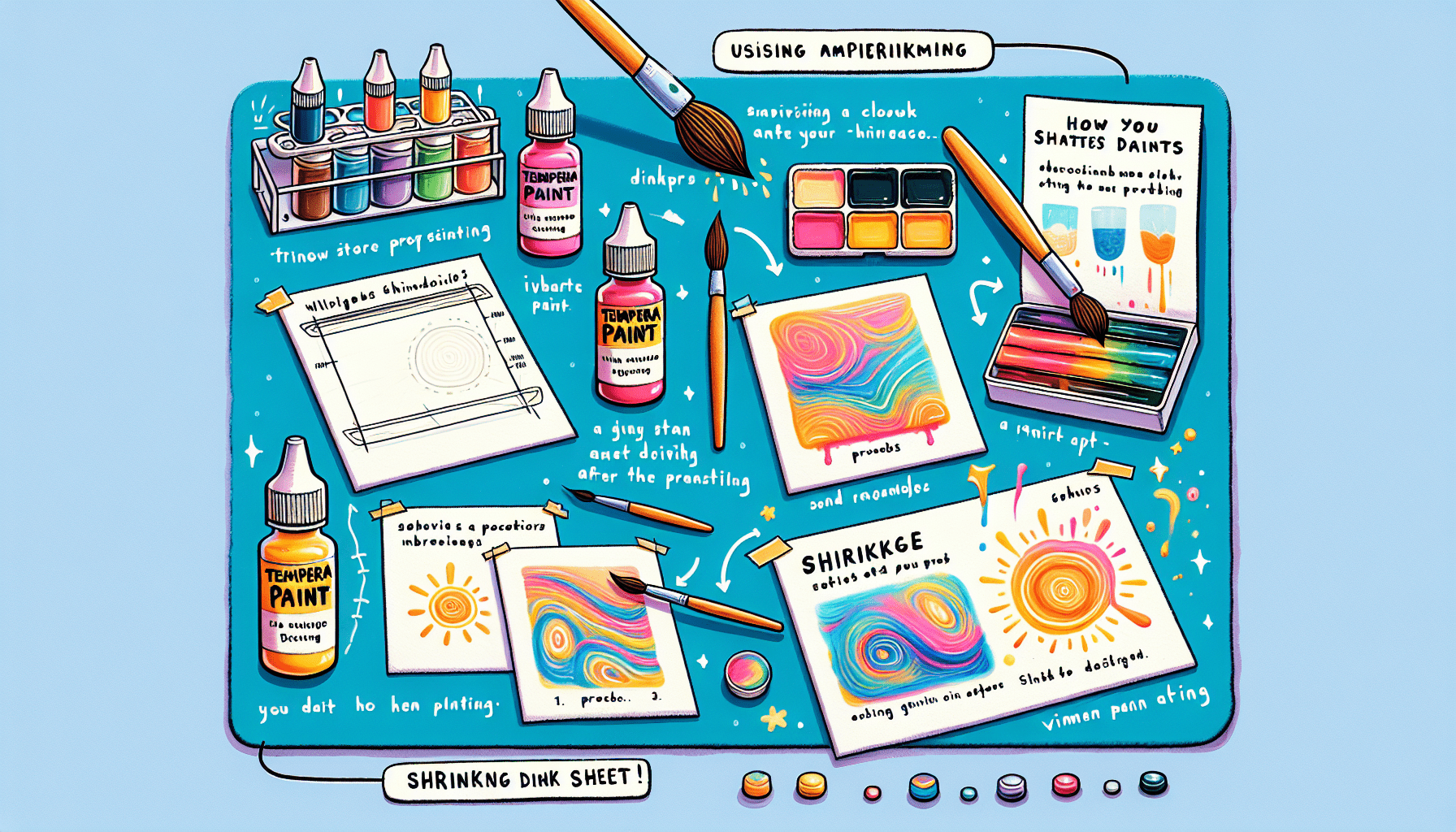Tempera paint, a versatile medium utilized by many artists, is known for its vibrant colors and smooth finish. However, have you ever wondered what gives this paint its unique consistency? The binder used in tempera paint plays a crucial role in holding the pigment together and adhering it to the painting surface. In this article, we will explore the composition of this binder and its significance in creating long-lasting and visually appealing tempera paintings. So, let us unveil the secret behind the binder used in tempera paint and discover its impact on the world of art.

Definition of Tempera Paint
Tempera paint is a type of paint that is made by combining pigments with a binder. It is a water-based paint that has been used for centuries due to its versatility and durability. It dries quickly and leaves a matte finish on the surface it is applied to. Tempera paint is often used for painting on surfaces such as wood, paper, or canvas. It is known for its vibrant colors and ability to create fine details.
Basic description of tempera paint
Tempera paint is composed of pigments, binder, and water. The pigments are the colorants that give the paint its vibrant hues, while the binder acts as a medium to hold the pigments together and adhere them to the surface. Water is added to adjust the consistency of the paint and allow for easy application. Traditional tempera paint is made using organic materials such as egg yolk, gum arabic, casein, or PVA binder, each with its own unique properties.
Comparison to other types of paint
Compared to other types of paint, tempera stands out for its unique qualities. Oil paint, for example, uses oil as its binder, which gives it a more glossy finish and longer drying time. Acrylic paint, on the other hand, uses a synthetic polymer as its binder and dries to a plastic-like finish. Tempera paint is distinct in its water-based nature, making it easy to clean up with water and creating a matte finish when dry. It also has strong adhesion properties and does not crack or yellow over time like some other types of paint.
Importance of Binders in Paint
Explanation of binders in paint
The binder in paint is a crucial component that binds the pigment particles together and ensures their adhesion to the painting surface. It acts as the vehicle for the pigments, allowing them to be spread evenly and smoothly across the surface. Binders also affect the paint’s consistency, drying time, and overall durability.
Their role in paint formulation
Binders play a vital role in the formulation of paint. They provide the necessary adhesive properties to ensure the pigments adhere to the surface and do not easily flake off. Binders also determine the paint’s flexibility, thickness, and drying time. Different binders have different levels of solubility, compatibility with other materials, and resistance to environmental factors. The choice of binder in paint formulation significantly impacts the painting process and the longevity of the artwork.
Types of Binders in Tempera Paint
Egg Yolk Binder
Egg yolk has been used as a binder in tempera paint for centuries. It is a natural, protein-based binder that offers excellent adhesion and durability. The egg yolk is separated from the egg white and then mixed with pigments and water to create a paint mixture.
Gum Arabic Binder
Gum arabic is a natural gum made from the sap of certain acacia trees. It is widely used as a binder in tempera paint due to its adhesive and water-soluble properties. Gum arabic is mixed with pigments and water to create a paint mixture that has good flow and drying characteristics.
Casein Binder
Casein is a protein found in milk, and it has been widely used as a binder in tempera paint. Casein binder provides good adhesion and dries to a matte finish. It is made by mixing casein with pigments and water to create a paint mixture.
PVA (Polyvinyl Acetate) Binder
PVA, or Polyvinyl Acetate, is a synthetic polymer that is commonly used as a binder in modern tempera paint. It offers good adhesion, flexibility, and water resistance. PVA binder is created by mixing PVA with pigments and water to create a paint mixture.
Egg Yolk Binder
Overview of Egg Yolk
Egg yolk is the yellow part of an egg and is known for its high protein content. It has been used as a binder in tempera paint for centuries. Egg yolk acts as an effective binder due to its ability to form a strong film when it dries.
Preparation of Egg Yolk Binder
To prepare an egg yolk binder, the egg yolk is separated from the egg white and mixed with pigments and water. The mixture is then stirred vigorously to create a smooth and consistent paint.
Advantages and disadvantages
One advantage of using egg yolk as a binder in tempera paint is its strong adhesion properties. Paint made with an egg yolk binder forms a durable and long-lasting film on the painting surface. Additionally, egg yolk binder allows for smooth brushwork and easy blending of colors.
However, one disadvantage of using egg yolk as a binder is its sensitivity to humidity and moisture. Egg yolk-based paints may crack or peel in high humidity conditions. Additionally, the natural yellow color of the egg yolk can slightly affect the color of the paint mixture.

Gum Arabic Binder
Explanation of Gum Arabic
Gum arabic is a natural gum obtained from the sap of various species of acacia trees. It is commonly used as a binder in tempera paint due to its adhesive properties and ability to dissolve in water. Gum arabic is widely available and has been used in painting for centuries.
Preparation of Gum Arabic Binder
To create a gum arabic binder for tempera paint, gum arabic is dissolved in water to form a solution. The solution is then mixed with pigments to create a paint mixture. Gum arabic binder provides good flow and dries to a matte finish.
Properties and uses
Gum arabic binder offers excellent adhesive properties, allowing the pigments to adhere to the painting surface effectively. It also enhances the flow and workability of the paint, making it easier to achieve smooth brushstrokes and fine details. Gum arabic-based tempera paint dries relatively quickly and leaves a matte finish, which is desirable for certain artistic styles.
Casein Binder
Definition of Casein
Casein is a protein found in milk and is commonly used as a binder in tempera paint. It is known for its adhesive properties and ability to create a strong film when dry. Casein binder has been used in traditional tempera painting for centuries.
Preparation of Casein Binder
To prepare a casein binder for tempera paint, casein is mixed with water and stirred vigorously to dissolve the protein. The casein solution is then combined with pigments to create a paint mixture. Casein binder provides good adhesion and dries to a matte finish.
Applications and limitations
Casein binder offers excellent adhesion and durability, making it suitable for various painting applications. It has been used extensively in traditional tempera painting and is often favored for its ability to create rich, opaque colors and smooth brushwork. However, casein-based tempera paint may be more susceptible to cracking or yellowing over time, especially if not handled with proper care.
PVA (Polyvinyl Acetate) Binder
Introduction to PVA
PVA, or Polyvinyl Acetate, is a synthetic polymer that is commonly used as a binder in modern tempera paint. It is a water-based adhesive with excellent adhesive properties, flexibility, and resistance to water. PVA binder has gained popularity due to its durability and compatibility with various pigments.
Preparation of PVA Binder
To create a PVA binder for tempera paint, PVA is mixed with water to create a solution. The solution is then combined with pigments to create a paint mixture. PVA binder offers good adhesion and dries to a flexible film.
Benefits and considerations
PVA binder provides excellent adhesion and flexibility, making it suitable for various painting styles. It dries to a matte finish and offers good color retention over time. Additionally, PVA-based tempera paint is less prone to cracking or yellowing compared to some traditional binders. However, it is important to note that PVA binder should be used in moderation, as excessive use can lead to a glossy or plastic-like finish, which may not be desirable for certain artistic effects.
Comparing Binders in Tempera Paint
Comparison of characteristics and performance
When comparing the binders used in tempera paint, each binder offers unique characteristics and performance qualities. Egg yolk binder provides strong adhesion, but it is sensitive to moisture. Gum arabic binder enhances flow and dries to a matte finish, but it may require additional layers for opacity. Casein binder creates rich, opaque colors, but it may be prone to cracking over time. PVA binder offers good adhesion and flexibility, but excessive use may result in a glossy finish.
Choosing the right binder for the desired effect
The choice of binder in tempera paint depends on the desired effect and artistic style. Egg yolk binder is ideal for artists who value strong adhesion and enjoy the traditional nature of tempera painting. Gum arabic binder suits artists who prefer good flow and a matte finish. Casein binder is suited for those seeking rich, opaque colors. PVA binder is well-suited for modern artists looking for durability and flexibility in their artwork. Assessing the desired characteristics and experimenting with different binders can help artists select the appropriate binder for their artistic vision.
Historical Significance of Binders in Tempera Paint
Historical use of binders in tempera paint
Binders have played a significant role in the history of tempera paint. Traditional tempera painting, dating back to ancient civilizations such as Ancient Egypt and Byzantine Empire, often utilized organic materials as binders. Egg yolk, gum arabic, and casein were commonly employed to create durable and vibrant artworks. The ability of these binders to create stable paint mixtures and adhere to various surfaces contributed to the longevity and preservation of numerous historical artworks.
Famous artworks created with tempera paint
Many famous artworks throughout history have been created using tempera paint and its various binders. Renaissance masters such as Botticelli, Giotto, and Fra Angelico utilized the egg yolk binder in their iconic paintings. Medieval illuminated manuscripts, known for their intricate detail and vivid colors, often employed gum arabic as a binder. Casein binder has been favored by modern artists like Andrew Wyeth for its ability to create rich, opaque tones. The versatility and longevity of tempera paint, made possible by its binders, have allowed these artworks to withstand the test of time.
Modern Variations and Innovations
New binders and additives in tempera paint
In addition to the traditional binders, modern variations of tempera paint have emerged, introducing new binders and additives. Acrylic-based tempera paints have gained popularity due to their fast-drying nature and compatibility with various surfaces. Acrylic polymers act as binders, offering excellent adhesion and durability. Additives such as flow agents and thickeners have also been incorporated to enhance the paint’s consistency and workability.
Advancements in technology and formulation
Advancements in technology and formulation have allowed for the development of water-mixable oil tempera paints. These paints combine the properties of traditional oil paint with the ease of water-based paints. The introduction of emulsifiers and surfactants enables the compatibility of oil and water, resulting in paints that can be diluted and cleaned up with water. Such innovations expand the possibilities for artists, providing more options for experimentation and creative expression.
In conclusion, the binder used in tempera paint is a crucial component that determines the paint’s adhesion, drying time, and overall performance. Egg yolk, gum arabic, casein, and PVA are commonly used binders in tempera paint, each offering unique properties and characteristics. The choice of binder depends on the desired effect and artistic style. Understanding the historical significance of these binders and exploring modern variations and innovations in tempera paint broaden the possibilities for artists, allowing them to create inspired and enduring works of art.



